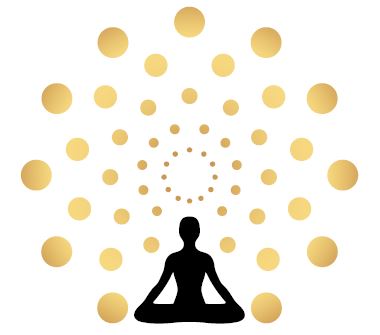What Do You See When You Look At This Homeless Man?
What do you see here? A worthless bum or joyful free being? A disgusting vagrant or a version of your greater Self?
How you see the world tells a lot about you.
“A MAN IS WHAT HE THINKS ABOUT ALL DAY LONG.” – RALPH WALDO EMERSON
There is a passage in the book, Power vs. Force by David R. Hawkins that has stayed with me for many years. For those that are unfamiliar, Hawkins was a prominent American Psychiatrist who was also an ardent spiritual seeker. Through many years of searching he finally realized the ultimate goal, that of awakening or enlightenment.
His scientific background paired with the awakened state prompted him to create a model for expressing various levels of consciousness. Like many emotional scales, his numerical model helps to illustrate increasing levels of maturity and growth in the development of individual human evolution beginning with shame, guilt and apathy and eventually reaching to the pinnacle of conscious evolution and the experience of joy, peace and enlightenment. Instead of paraphrasing this passage, I feel it is best to simply absorb it on your own:
“…Imagine a “bum” on the street corner: In an upscale neighborhood stands an old man in tattered clothes, alone and leaning against the corner of an elegant brownstone. Look at him from the perspective of various levels of consciousness, and note the differences in how he appears to different people and viewpoints.
- From the bottom of the scale, at the level of 20 (Shame), the bum is seen to be dirty, disgusting, and disgraceful. From the level 30 (Guilt), he’d be blamed for his condition: He deserves what he gets; he’s probably a lazy welfare cheat. At 50 (Hopelessness), his plight would appear desperate, a damning piece of evidence to prove that society can’t do anything about homelessness. At 75 (Grief), the old man looks tragic, friendless, and forlorn.
- At consciousness level of 100 (Fear), we might see the bum as threatening, a social menace: Perhaps we should call the police before he commits some crime. At 125 (Desire), he might represent a frustrating problem – why doesn’t somebody do something? At 150 (Anger), the old man might look like he could be violent; or, on the other hand, one could be furious that such horrible conditions exist in our country today. At 175 (Pride), he could be seen as an embarrassment or lacking the self-respect to better himself. At 200 (Courage), we might be motivated to wonder if there is a local homeless shelter – all he needs is a job and a place to live.
- At 250 (Neutrality), the bum looks okay, maybe even interesting. “Live and let live,” we might say – after all, he’s not hurting anyone. At 310 (Willingness), we might decide to go down and see what we can do to cheer up that fellow on the corner; maybe we’d be motivated to volunteer some time at the local shelter. At 350 (Acceptance), the man on the corner appears intriguing: He probably has an interesting story to tell; he’s where he is for reasons we may never understand. At 400 (Reason), he’s a symptom of the current economic and social malaise, or perhaps a good subject for in-depth psychological study.
- At the higher levels, the old man begins to look not only interesting, but friendly – and then lovable. Perhaps we’d then be able to see that he is, in fact, one who had transcended social limits and gone free, a joyful old guy with the wisdom of age in his face and the serenity that comes from indifference to material things. At 600 (Peace), he’s revealed as our own self in a temporary expression.
When approached, the bum’s response to these different levels of consciousness would vary with them. With some, he’d feel secure – with others, frightened or dejected. Some would make him angry; others would delight him; some he’d avoid, others he’d greet with pleasure. (And so it’s said that we meet what we mirror.)
So much for the manner in which our level of consciousness – that is; the world we encounter as passive observers – decides what we see. It’s true that we’ll react to things in a fashion predicated by the level that we perceive them from, that is to say, external events may define conditions, but they don’t determine the consciousness level of human response…”
Your Life – Your Choice – Your Consciousness
So what did you first see when you set eyes upon this homeless man?
After reading the above passage, where do you fall on the scale of consciousness?
Are you surprised to know that there are many ways to perceive the same thing?
Can you see now that it is the quality of our consciousness that determines our reality?
What we believe, we percieve.
Self-Inquiry and The Spiritual Journey
We all have beliefs, but the challenge is that many of these are unconscious. When we are called to walk the spiritual path we are being called to question our thoughts, beliefs, and emotions. Self-inquiry is the conscious act of questioning oneself and reflecting on whether a particular belief or thought is true.
Examining our thoughts helps us to recognize where we are holding ourselves back in life, where we are limiting ourselves, and where we are not taking responsiblity.
The awakening process is about coming to the truth of who and what we are. We must examine our thoughts and beliefs in order to evolve beyond certain attitudes, states of mind, and perceptions.
Having a spiritual teacher, mentor, and coach can facilitate this process of self-inquiry by asking you the tough questions, helping you face your shadow self, and support you in the integration process.
If you are interested in learning more about Spiritual Coaching and Mentoring please schedule your discovery call today. I look forward to meeting you!

